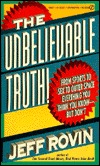Telling Them What It Means
I always enjoy receiving my copy of The Zulu Group’s Home News from realtor friend Steve Rupp. This month, I thought the article “What Does that Mean” would have particular relevance for blog content writers The following three explanations were taken from Jeff Rovin’s book The Unbelievable Truth,,,
- Pulling the wool over someone’s eyes…In earlier times, thieves would yank their victims’ wool wigs over their eyes, so that the victims couldn’t identify the perpetrators.
- Blackmail… In 16th century England the word mail meant “rent”. Debts that had to be paid in silver were called whitemail; those that could be paid in livestock or other property were “blackmail”. Since blackmail had no ascertainable value, debt collectors could extort any amount they chose from the debtors.
- Red tape…It was the custom, in England, to seal important documents with red wax and tape. The only way to read those documents was by cutting the tape.
Interesting….almost exactly ten years ago, I published a Say It For You blog post called “Which Means That” Business Blogging. Al Trestrail, a networking colleague of mine at the time had just produced a brochure offering marketing tips. Trestrail suggested to salespeople that they should develop a list of benefits, and then, after each item, add the words “which means that….”, going on to explain how that benefit helped the buyer of the product or service. Adapting that rule to the world of blogging means answering your readers’ question “so what?” before it’s even asked, I realized.
We’ve all heard it – buyers care about benefits, not features. Content writers need reminding – there are millions of blog posts out there making claims of one sort or another. But what do those claims mean to the customers and clients reading that blog post? It’s true for both existing customers and clients and the new ones we’re seeking to win over – to win hearts and dollars, you need a strategy in place to demonstrate “what it means”, which might include describing how your “it” is: rarer easier to use, safer, more compact, more water-resistant, more beautiful, greener, or fresher.
A big part of blogging is simply telling them what it means!


Leave a Reply
Want to join the discussion?Feel free to contribute!